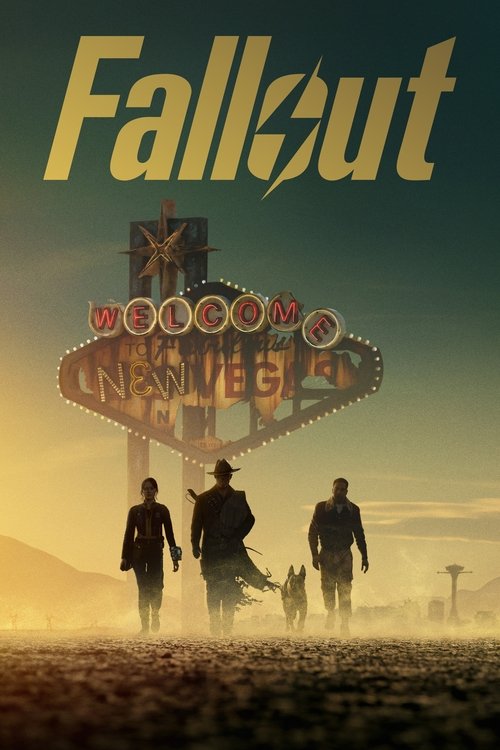
Ask Your Own Question
What is the plot?
The episode begins with the Dunder Mifflin Scranton branch staff gathered in the conference room. Michael Scott, the branch manager, is excitedly discussing the need for a new local advertisement to boost sales. He believes that a creative ad will help the company stand out in the competitive paper market. Michael is determined to make the ad memorable and engaging, and he envisions a commercial that showcases the personality of the office.
As the meeting progresses, Michael encourages everyone to contribute ideas for the ad. He is particularly enthusiastic about the concept of using a catchy jingle. The staff, however, is skeptical about Michael's vision. Jim Halpert and Pam Beesly exchange glances, unsure of how to respond to Michael's over-the-top enthusiasm. Dwight Schrute, ever the eager participant, suggests a more aggressive approach, proposing that they should highlight the superiority of Dunder Mifflin's paper over competitors.
Michael decides to take charge of the ad's production and enlists the help of Ryan Howard, who is now working as a temp. Ryan is initially reluctant but eventually agrees to assist Michael in creating the ad. They brainstorm ideas, and Michael insists on incorporating his own personal flair, which includes a dramatic reenactment of a paper delivery. Ryan tries to steer Michael towards a more professional approach, but Michael's creative instincts take over.
Meanwhile, Jim and Pam are dealing with their own issues. Jim is trying to impress Pam with his newfound confidence, but he also feels the pressure of Michael's expectations. Pam, on the other hand, is supportive but concerned about the direction of the ad. She suggests that they should focus on the positive aspects of working at Dunder Mifflin rather than Michael's more outrageous ideas.
As the day progresses, Michael and Ryan begin filming the ad in the office. Michael's antics become increasingly absurd, including a scene where he pretends to be a paper superhero. The rest of the staff watches with a mix of amusement and embarrassment. Dwight, eager to prove his worth, tries to take control of the filming process, leading to a clash between him and Michael. Dwight's competitive nature shines through as he attempts to outshine Michael in the ad.
In a parallel storyline, Angela Martin is dealing with her own frustrations regarding the ad. She is unhappy with the idea of promoting the office in such a silly manner and expresses her disdain for Michael's approach. Angela's stern demeanor contrasts sharply with Michael's playful attitude, creating tension between them. She believes that the ad should reflect the professionalism of Dunder Mifflin rather than its quirky culture.
As filming continues, Michael becomes increasingly frustrated with Ryan's lack of enthusiasm. He feels that Ryan is not fully committed to the project and decides to take matters into his own hands. Michael starts improvising scenes that are even more ridiculous, including a segment where he dances around the office. The staff's reactions range from laughter to disbelief, and it becomes clear that Michael's vision is spiraling out of control.
The climax of the episode occurs when Michael finally presents the finished ad to the staff. He is proud of his work and believes it will be a hit. However, when the ad is screened, it is met with mixed reactions. The staff is shocked by the absurdity of the final product, which features Michael in a series of over-the-top scenarios that do not accurately represent the company. Jim and Pam exchange worried looks, realizing that Michael's vision has gone too far.
In the aftermath of the ad screening, Michael is initially oblivious to the negative feedback. He remains convinced that the ad is brilliant and that it will attract customers. However, as the staff begins to voice their concerns, Michael's confidence starts to waver. He grapples with the realization that his creative instincts may not have been the best approach for the company's image.
The episode concludes with Michael reflecting on the ad's reception. He is disappointed but ultimately determined to learn from the experience. The staff, while amused by the chaos of the ad production, also recognizes the importance of teamwork and collaboration. The episode ends on a humorous note, with Michael still holding onto his belief that the ad will somehow succeed, despite the overwhelming evidence to the contrary.
What is the ending?
In the ending of "Local Ad," the Dunder Mifflin employees gather to watch the local ad they created. Michael Scott is initially excited about the ad, but he becomes disheartened when he realizes that the ad is not as good as he hoped. The ad features a series of awkward moments and fails to capture the essence of the office. Despite this, the employees rally around Michael, and he feels a sense of camaraderie. The episode concludes with Michael's realization that the ad may not be perfect, but it represents their collective effort.
As the episode progresses towards its conclusion, the scene shifts to the office where the employees are gathered around a television to watch the final cut of the local ad they produced. Michael Scott, filled with anticipation, stands in front of the group, eager to showcase their hard work. The atmosphere is charged with a mix of excitement and nervousness as everyone prepares to see the culmination of their efforts.
The ad begins to play, and the employees watch intently. The visuals are a montage of various scenes featuring the office staff, but as the ad unfolds, it becomes clear that it is filled with awkward moments and unintentional humor. Michael, who had envisioned a polished and professional advertisement, starts to feel a wave of disappointment wash over him. He had hoped to impress the audience and elevate the image of Dunder Mifflin, but instead, the ad highlights the quirks and eccentricities of the employees.
As the ad continues, the employees react with a mix of laughter and cringes. Jim Halpert and Pam Beesly exchange glances, both amused and embarrassed by the portrayal of their workplace. Dwight Schrute, ever the enthusiastic supporter of Michael, tries to maintain a positive attitude, but even he cannot hide his discomfort at some of the ad's more ridiculous moments.
When the ad concludes, there is a moment of silence in the room. Michael, feeling the weight of the moment, looks around at his employees, searching for validation. He realizes that the ad may not have turned out as he envisioned, but it does represent their teamwork and the unique spirit of Dunder Mifflin. The employees, sensing Michael's vulnerability, begin to rally around him, offering support and encouragement. They acknowledge that while the ad may not be perfect, it is a reflection of who they are as a team.
In the final moments, Michael's expression shifts from disappointment to a sense of pride. He understands that the ad, despite its flaws, is a testament to their collective effort and the bond they share. The episode closes with a sense of camaraderie among the employees, highlighting the importance of teamwork and the acceptance of imperfection in their work. Each character, from Jim and Pam to Dwight and Michael, finds a moment of connection, reinforcing the theme of unity in the face of challenges.
Is there a post-credit scene?
In the episode "Local Ad" from Season 4 of The Office, there is no post-credit scene. The episode concludes without any additional content after the credits roll. The focus remains on the main storyline, which revolves around the creation of a local advertisement for Dunder Mifflin, showcasing the various antics and character dynamics throughout the episode.
What role does Michael Scott play in the creation of the local ad?
Michael Scott takes the lead in creating the local ad for Dunder Mifflin's Scranton branch. He is determined to make it memorable and impactful, showcasing his desire to be seen as a creative and effective leader. His enthusiasm often leads to over-the-top ideas, reflecting his need for validation and recognition.
How does Dwight Schrute contribute to the local ad production?
Dwight Schrute is heavily involved in the local ad production, showcasing his competitive nature and desire to outshine others. He takes on the role of a 'creative consultant' and pushes for a more aggressive and intense approach, which leads to humorous and chaotic moments as he tries to assert his vision.
What is Jim Halpert's reaction to Michael's ad ideas?
Jim Halpert is initially skeptical and amused by Michael's ad ideas. He often provides sarcastic commentary and tries to keep Michael grounded, reflecting his role as the voice of reason in the office. Jim's reactions highlight the absurdity of Michael's concepts, showcasing their contrasting personalities.
How does Pam Beesly feel about the local ad and her role in it?
Pam Beesly feels conflicted about the local ad. While she wants to support Michael and the team, she is also aware of the ridiculousness of the situation. Her emotional state fluctuates between wanting to be involved and feeling embarrassed by the antics, particularly as she navigates her own aspirations as an artist.
What is the significance of the final ad that is produced?
The final ad produced is significant as it encapsulates the chaotic and humorous essence of the Scranton branch. It features a mix of Michael's outrageous ideas and Dwight's intense contributions, resulting in a bizarre yet memorable advertisement. This reflects the unique dynamics of the office and serves as a testament to their unconventional approach to business.
Is this family friendly?
In "Local Ad," Season 4, Episode 5 of The Office, there are a few elements that may be considered objectionable or upsetting for children or sensitive viewers:
-
Innuendos and Suggestive Humor: The episode contains several instances of innuendo and suggestive jokes, typical of the show's humor, which may not be suitable for younger audiences.
-
Character Conflicts: There are moments of tension and conflict between characters, particularly involving Michael Scott's over-the-top behavior and his interactions with others, which could be uncomfortable for some viewers.
-
Mocking and Insensitivity: The episode features scenes where characters make fun of each other, which may not be appropriate for children who are sensitive to bullying or teasing.
-
Emotional Vulnerability: Some characters display emotional distress or vulnerability, particularly in relation to their jobs and personal aspirations, which might resonate differently with younger viewers.
Overall, while the episode maintains a comedic tone, these elements could be considered potentially objectionable for a family-friendly viewing experience.














